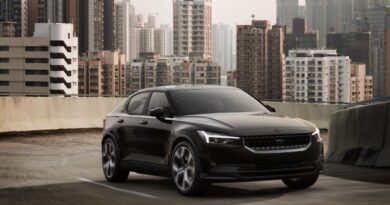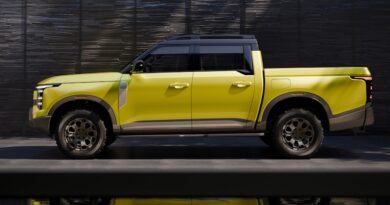2026 Ineos Fusilier showcases rugged 4WD tech with full electric drivetrain – and it’s designed to get seriously dirty
Newcomer off-road brand Ineos has unveiled its first EV, which should hit the market in 2026 as a zero emissions rival to upcoming electric off-roaders from Land Rover, Mercedes-Benz and Toyota.
The Ineos Fusilier is set to join the rugged Land Rover-inspired Grenadier and brings an EV powertrain option as the brand prepares for tightening emissions regulations.
READ MORE: Why electric cars will be more capable off-road
The Fusilier will also have the option of a range-extender hybrid system that uses electric motors to drive the wheels and a small petrol engine as an onboard generator.

However, instead of being built on a traditional ladder frame chassis – as the Grenadier is – the Fusilier gets a modern skateboard-style EV architecture that packages the batteries and suspension system into a rolling unit.
The Fusilier is slightly smaller than the Grenadier but maintains much of its utilitarian design – with a blocky stance, utility rails built into the doors and circular headlights – albeit with some more curves for a more modern look.
Those design tweaks and the addition of active grille flaps are also about improving aerodynamics to maximise efficiency, thereby extending the driving range between charges.

No word yet on how the Fusilier will perform off-road although Ineos has previously said an EV should have similar nous as anything powered by petrol or diesel.
The torquey nature of electric motors and the ability to easily regulate traction control systems should make for some interesting drive modes that could improve the capability compared with other 4WDs.

Indeed it seems that Ineos – which owns one-third of the Mercedes-AMG F1 team – is far from walking away from its prime reason for being: off-road ability.
The Fusilier is set to be tested on the gruelling Shoeckl mountain facility in Austria, a place that also forms the test base for the mighty Mercedes-Benz G-Wagen, which will soon be available as the all-electric EQG.
“Announcing our third model line is another significant milestone for Ineos Automotive, cementing our intent as an automotive manufacturer – like our full vehicle line-up, we are here for the long-haul,” says Lynn Calder, CEO of Ineos Automotive.

Early images of the Fusilier show it without a spare wheel hanging off the back door, something that can obviously be changed closer to the anticipated 2026 production date.
And, of course, for those looking to venture beyond the existing EV charging network, there’s a plug-in hybrid model.
Ineos chief Sir Jim Ratcliffe – who created the Grenadier to ensure there was still a built-for-purpose 4WD along the lines of the original Land Rover Defender – says that a hybrid version was necessary to account for traveling to remote locations.

“As we developed this vehicle, we quickly concluded that in order to move towards decarbonisation but continue making cars that consumers want to drive, we need a mix of powertrain technologies,” says Ratcliffe, who was also sending a signal to governments.
“BEVs are perfect for certain uses: shorter trips and urban deliveries, but industry and governments need to have realistic expectations around other technologies that can help accelerate the necessary pace of change. That is the reason we are offering an additional powertrain for the Fusilier, one that dramatically reduces emissions but has the range and refuelling capabilities needed.”
The Fusilier’s battery electric system is expected to use two electric motors (the company also evaluated triple and quad-motor set-ups) as part of an 800V architecture.

The battery pack is expected to be about 100kWh hours for 500-600km of driving range.
It’ll no doubt offer better performance than the BMW-sourced six-cylinder engines in the Grenadier.




